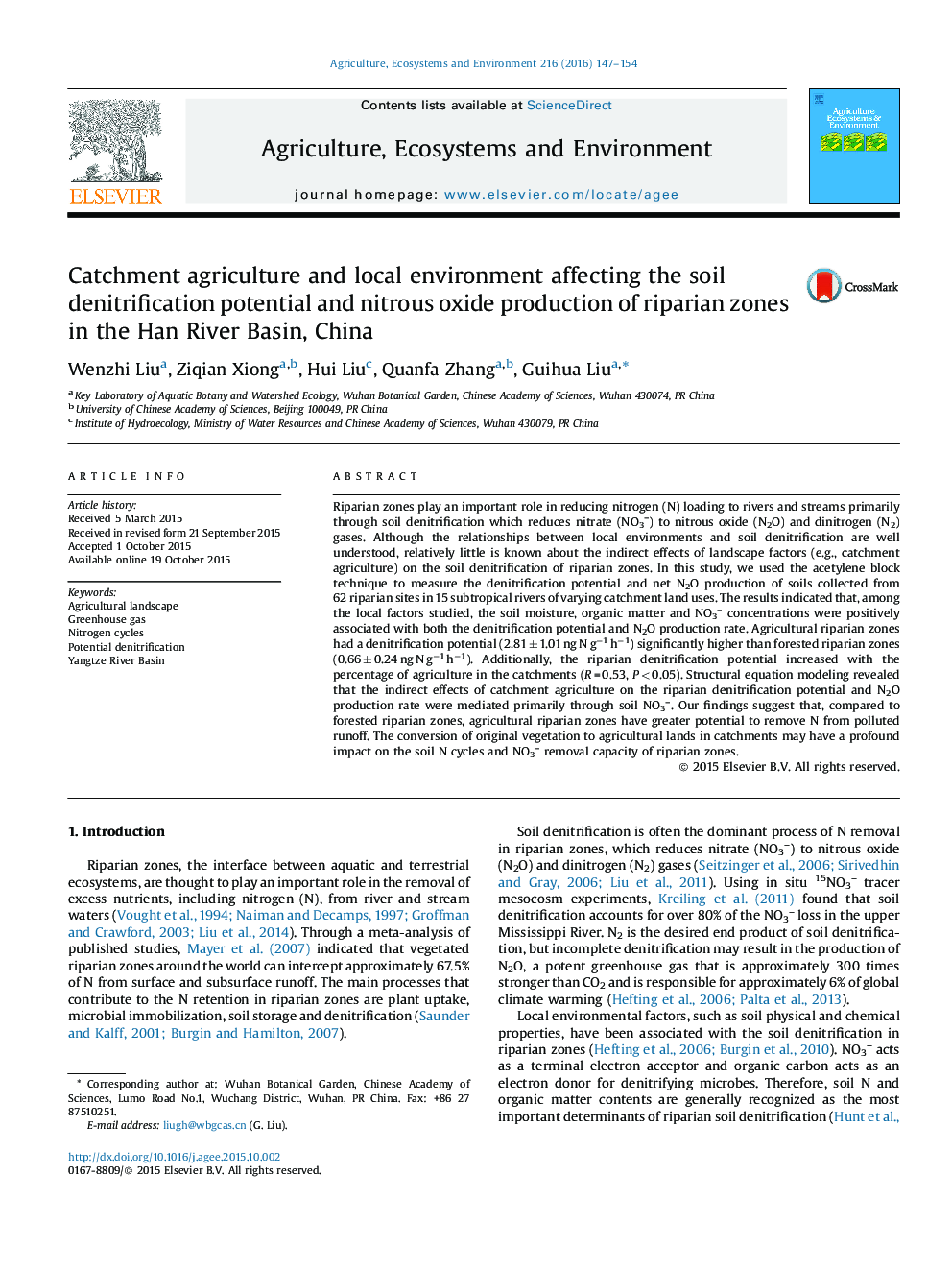| Article ID | Journal | Published Year | Pages | File Type |
|---|---|---|---|---|
| 2413635 | Agriculture, Ecosystems & Environment | 2016 | 8 Pages |
•Riparian denitrification was positively related to soil nitrate concentration.•Riparian denitrification increased with the proportion of catchment agriculture.•Riparian zones played an important role in removing N from agricultural runoff.
Riparian zones play an important role in reducing nitrogen (N) loading to rivers and streams primarily through soil denitrification which reduces nitrate (NO3–) to nitrous oxide (N2O) and dinitrogen (N2) gases. Although the relationships between local environments and soil denitrification are well understood, relatively little is known about the indirect effects of landscape factors (e.g., catchment agriculture) on the soil denitrification of riparian zones. In this study, we used the acetylene block technique to measure the denitrification potential and net N2O production of soils collected from 62 riparian sites in 15 subtropical rivers of varying catchment land uses. The results indicated that, among the local factors studied, the soil moisture, organic matter and NO3– concentrations were positively associated with both the denitrification potential and N2O production rate. Agricultural riparian zones had a denitrification potential (2.81 ± 1.01 ng N g−1 h−1) significantly higher than forested riparian zones (0.66 ± 0.24 ng N g−1 h−1). Additionally, the riparian denitrification potential increased with the percentage of agriculture in the catchments (R = 0.53, P < 0.05). Structural equation modeling revealed that the indirect effects of catchment agriculture on the riparian denitrification potential and N2O production rate were mediated primarily through soil NO3–. Our findings suggest that, compared to forested riparian zones, agricultural riparian zones have greater potential to remove N from polluted runoff. The conversion of original vegetation to agricultural lands in catchments may have a profound impact on the soil N cycles and NO3– removal capacity of riparian zones.
